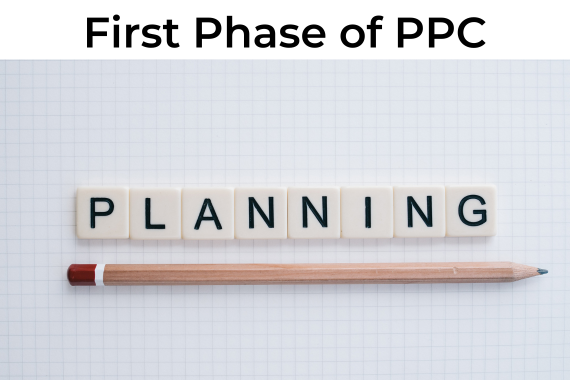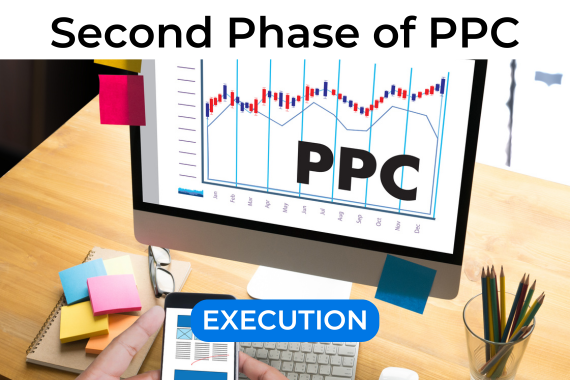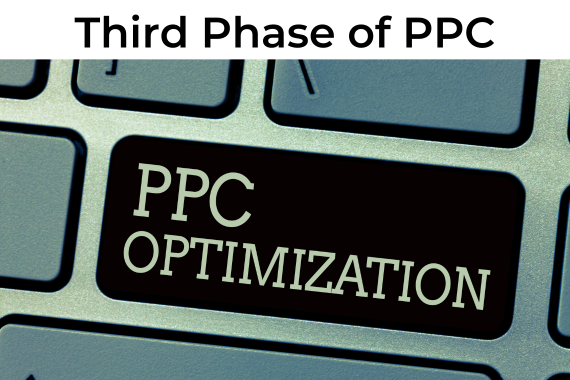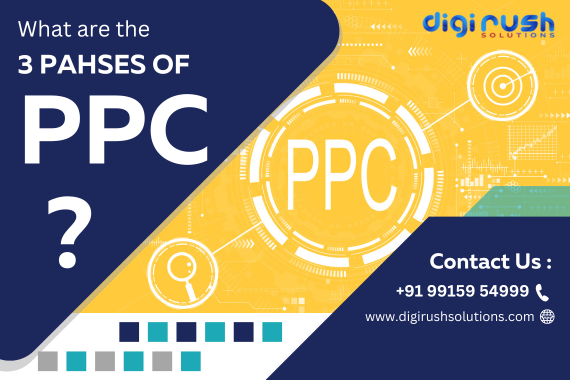Pay – Per – Click (PPC) advertising campaigns generally follow three key phases: Planning, Execution, and Optimization. Each phase is crucial for the success of the campaign and involves specific activities and strategies. A successful Pay-Per-Click (PPC) campaign involves three key phases:
1. Planning Phase

In this initial phase, the foundation of the PPC campaign is established. Key activities include:
- Goal Setting: Define what you aim to achieve with your PPC campaign (e.g., brand awareness, lead generation, sales).
- Budgeting: Determine the budget for the campaign and allocate funds appropriately.
- Audience Research: Identify and understand your target audience, including their demographics, interests, and online behavior.
- Keyword Research: Conduct thorough research to find relevant keywords that potential customers might use to search for your products or services.
- Competitor Analysis: Analyze competitors’ PPC strategies to identify opportunities and gaps.
- Campaign Structure: Organize campaigns and ad groups logically, based on product categories, services, or other relevant criteria.
- Ad Copy and Creative: Develop compelling ad copy and creatives that align with your campaign goals and resonate with your target audience.
- Landing Page Optimization: Ensure that the landing pages are optimized for conversions, with clear calls to action and relevant content.
2. Execution Phase

This phase involves the actual implementation and launch of the PPC campaign. Key activities include:
- Setting Up Campaigns: Use platforms like Google Ads or Bing Ads to set up your PPC campaigns, ad groups, and individual ads.
- Bidding Strategy: Choose and implement a bidding strategy (e.g., manual CPC, automated bidding) that aligns with your budget and goals.
- Ad Scheduling: Determine the optimal times and days to run your ads based on when your target audience is most active.
- Geo-Targeting: Set geographic parameters to ensure your ads are shown to users in relevant locations.
- Launching the Campaign: Activate the campaign and monitor its initial performance closely to ensure everything is running smoothly.
3. Optimization Phase

The final phase focuses on analyzing performance data and making adjustments to improve the campaign’s effectiveness. Key activities include:
- Performance Monitoring: Continuously track key metrics such as click-through rate (CTR), conversion rate, cost per click (CPC), and return on ad spend (ROAS).
- A/B Testing: Conduct A/B tests on ad copy, creatives, and landing pages to determine what works best.
- Bid Adjustments: Modify bids based on performance data to maximize ROI.
- Keyword Optimization: Add, remove, or refine keywords based on their performance and relevance.
- Ad Refinement: Update ad copy and creatives to improve engagement and conversion rates.
- Landing Page Tweaks: Make necessary changes to landing pages to enhance user experience and conversion rates.
- Budget Reallocation: Shift the budget towards higher-performing campaigns, ad groups, or keywords.
- Ongoing Analysis: Regularly review and analyze performance data to identify trends and make data-driven decisions for continuous improvement.
Each of these phases is essential for creating a successful PPC campaign. Effective planning sets the groundwork, proper execution ensures smooth operation, and continuous optimization drives better results and maximizes return on investment. PPC is an important part of Digital Marketing.
